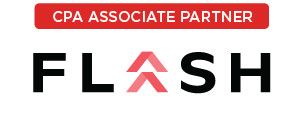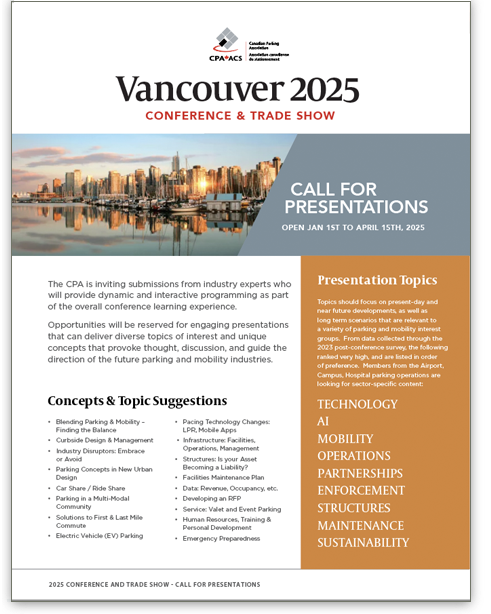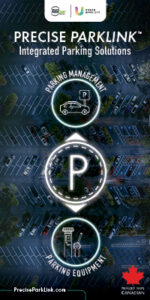By Carolyn Krasnow, Ph.D
In recent years, urban planners and community leaders across Canada have turned to “Smart Growth” planning approaches like Complete Streets and New Urbanism to help communities address common challenges associated with downtown planning in the era of the automobile. After decades of urban design focusing on the primacy of the auto, approaches focus on creating communities and streetscapes that provide, among other things, better integration of multi-modal transportation and better walking environments. The point of these planning approaches is to create healthier, less congested and ultimately more livable communities that also foster economic and commercial development.
Arising in the U.S. but quickly becoming international movements, Smart Growth-influenced developments and streetscape upgrades have cropped up throughout Canada. Canadian cities including Mont-Saint-Hilaire in Quebec, Whitehorse in Yukon, and Markham, Ontario have made their communities more walkable and bicycle-friendly, and improved the quality of life for residents. UniverCity in British Columbia and McKenzie Towne in Calgary were created as new communities with sustainable and/or new urbanist principles.
Creating urban environments that have a better balance of transportation modes isn’t as easy as it sounds. Critics of New Urbanism contend that it still accommodates “car culture” more than is desirable, and many people would like to see greatly reduced parking requirements for new developments and cities alike. And given the aging population, decreasing car ownerships trends among younger people, and the rise of car sharing, there is plenty of reason to plan parking with reduced needs in mind. But on the flip side, in most places cars are still the primary form of transportation for most people; not taking them into account adequately can hurt existing businesses and new ones.
A developer we worked with on a transit-oriented development in a vibrant Canadian city came up against this problem as they planned their…
Too often, ancillary parking lots are under-appreciated assets, neglected by their owners and managers until a problem arises.
Yet as we’ve learned in an article published in BOMA Magazine, the International Building Owners and Managers Association (BOMA) magazine, poor management decisions – deficient outsourcing contracts, inefficient operations, maintenance issues, employee theft, fraud, financial irregularities and poor use of occupancy statistics – can cause losses of up to 28% of parking revenues1.
This is a sign that managing this essential mobility tool in our cities deserves to be examined more closely.
Parking Lots: woven into the urban fabric
The history of parking lots is of course linked to the history of automobiles. Before they debuted in cities, streets were designed for travel by coach, tram or bicycle, or on foot. Then cars became financially accessible for a growing segment of the population and on-street parking quickly became saturated.
We believe that drivers searching for on-street parking represents about 30%2 of all traffic volume. This is particularly high near sites that generate parking needs such as subway stations, hospitals, shops, schools, educational institutions and workplaces. In a big city, where about 90% of on-street parking is free3 (this drops to 50% for downtown areas), this is one of the reasons why municipal authorities, concerned about the environmental, societal and economic implications of traffic congestion, rely more and more on policies that limit free on-street parking and often depend on the private sector to fill the gap.
Optimum Parking Management: the Art and Practice
Sound management of these infrastructures that are indispensable to city life allows us to optimize their operation and improve their profitability. Beyond the financial benefits, however, parking lots managed with profit in mind as well as efficiency can support the efforts of city authorities concerned with ensuring the quality of life and the environment of…
By John Mosebar
The parking industry is moving rapidly to contain costs, primarily by creating unstaffed facilities through the automation of ticketing and payment processes. Pair that with a large number of patrons and vehicles in easily accessible facilities and it’s easy to see why parking lots and garages can become magnets for criminals.
Crimes range from theft of property and vehicles to violent assaults against patrons. Fortunately, nearly all parking facility owners and operators feel a very real need to protect their patrons. Security is also an important issue with drivers. Surveys show one-third cite safety as a top factor in choosing where to park their vehicles.
Providing security has become easier with tried-and-true tools and procedures. But there is no one-size-fits-all security plan as parking facilities vary widely by size, type and location. For a parking operator, the process should begin by choosing a security integrator with proven experience securing parking facilities.
Security Tools
All-hazards assessment – Don’t spend money on security before first analyzing the strengths and weaknesses of the facility. Check out the surrounding neighborhood and traffic patterns. Monitor patron’s daily routines. Identify
danger zones such as remote areas of lots and garage stairwells and elevators. This will help create a plan to allocate money for the right equipment, where it is most needed.
Then here’s a look at some of today’s best security tools solutions.
Audio intercoms – Build audio intercoms into entry/exit gates and ticket dispensers to provide instant two-way communication with an offsite security guard or facility operator.
Emergency stations – Although most parking patrons carry their own mobile phones, those devices can’t be counted on in many subterranean or concrete structures or even outdoors during severe weather. Mobile phones also are often the first target of thieves.
Emergency towers, wall-mount boxes or flush mounted stations are effective when placed throughout garages…
By Karim Abraham
Automated lighting controls such as occupancy sensors present significant savings potential for parking facilities. However, quantifying potential savings and assessing the financial viability of a lighting automation project can be challenging. The missing link in planning energy savings projects is actual data to build an accurate business case.
Recently, a parkade in Vancouver’s Chinatown neighbourhood underwent an exercise to reduce energy costs and improve building performance. The parkade had been approached a number of times to update their lighting to save costs. Each time, the numbers looked slightly different – and there was no way to tell what the actual return on investment would be. Eventually, the automation project that was implemented would accurately predict savings and reduce the parkade’s costs by installing occupancy sensors in conjunction with real-time data monitoring.
Energy specialists recognized that the parkade lights did not need to be on 24 hours a day, and that the best business case involved adding occupancy sensors to dramatically reduce the amount of time lights were on each day. The problem was that they were still making assumptions on how much of a reduction the occupancy sensors would generate. Busy days could have significantly lower savings than weekends, and at night the traffic would be different again.
Using a systematic approach, data loggers were installed on the lights in the parkade, and pilot occupancy sensors were installed on one floor only. The data that was produced over the coming weeks showed a reduction in consumption by 49.3% as a result of the installation of occupancy sensors. An excellent result.
The data was then pro-rated to factor the varying traffic flow by floor, and savings calculations were adjusted accordingly. For example, lower floors are likely to receive more traffic and therefore achieve lower savings. The pilot occupancy sensors were installed on…
By Andrew Vidor
There has been a lot of discussion in recent years about Canada’s “crumbling infrastructure.” City, provincial, and national decision-makers are facing hard choices—and potentially enormous bills—about how to repair old and worn roadways, bridges, and viaducts.
This infrastructure crisis should serve as a cautionary tale for parking owners, both public and private. As with any infrastructure component, your parkade requires maintenance and routine repairs over its lifetime. To borrow a cliché, it’s easy to be penny wise, but pound foolish. Deferring (or ignoring) routine maintenance will inevitably lead to far more expensive repairs down the road.
But protecting your parking investment doesn’t end with maintenance. It’s just as important to have an asset management plan to operate, maintain, and perhaps even plan for the decommissioning of your parking assets at the end of their useful service life. An asset management plan should revolve around the specific characteristics, uses, and plans for each individual parking asset as well as the organization it supports. It should also take into account the resources that are available to manage the parking asset in the short-term, as well as anticipated parking assets in the years to come.
MAINTAINING YOUR PARKADE
For many parking owners, maintenance can be an elusive concept. As one long-time operator once told me, “I know I’m supposed to be picking up the trash, sweep the elevator lobbies, and mop up the spills; but are there other maintenance items I may be forgetting?”
In fact, a maintenance plan is much more than occasional spot cleaning. It’s a comprehensive strategy designed to keep a parkade operational and structurally sound. Of course the primary purpose is to prevent structural degradation of a parking asset, but maintenance plans can also help keep parkades operating at optimum efficiency.
Physical Maintenance
What does a maintenance plan involve? The most obvious elements…
Many parking-related discussions are about parking fees and about costs of (building and maintaining) parking facilities. The importance of parking is widely recognized, but car drivers are reluctant to pay even a small amount of money for parking. But when paid parking is introduced or parking fees are increased, it appears that the price-elasticity of parking demand is low.
In the heated debate about parking you will find on one side the representatives of retail-organizations, proclaiming that every cent spent on parking fees is too much and is chasing customers away. At the other side of the spectrum there will be parking operators declaring that free parking does not exist, and that parking fees are necessary to achieve a profitable business result.
Very few of these discussions are based upon research-supported facts. That is not so strange; quantitative research on this matter is rather scarce, and the results are not generally known.
This article will give some research-funded food for thought on the value of parking.
Policy-makers are waking up to the fact that cyclists and pedestrians have to be protected if multi-modality is to be a success. As a result, there is a thriving market in vulnerable road user detection but technology choice is an important factor in its success. Here, Q-Free TDC’s Colin Reekie talks about initiatives currently under way in Scotland.
Vulnerable road users — the collective term for cyclists and pedestrians — present traffic engineers with especial challenges. They are small, often numerous and often to be found in traffic monitoring situations which have complex geometries and occluded lines of vision. Modern bicycle design also means they have very little metallic content, which makes the use of inductive loop technology for their detection problematic. Bicycles are also highly likely to come off second-best in a collision with a car or larger vehicle.
Globally, as governments look to reduce overall numbers of those killed and seriously injured on roads whilst also looking to reduce transport’s environmental footprint, there is increasing recognition of the need to detect and protect vulnerable road users in crowded, multimodal traffic environments. This has implications both in terms of the types of technologies used and how it is deployed.
Q-Free TDC is currently helping local authorities in Scotland to monitor how they are supporting UK Government efforts to increase numbers of cyclists and build more sustainability and fitness into personal mobility. The national goal is to have 10 per cent of traffic in the UK be cycle-based by 2020, and so there is a real need to have specific data on how and where people are cycling.
Specifically at three sites in Glasgow, Scotland’s largest city, Q-Free TDC has provided a solution which has already been in successful operation for over a year in the Danish capital, Copenhagen. This so-called ‘Copenhagen Solution’…
Municipal parking managers have the challenging task of balancing the management of a scarce resource and providing service to a wide range of customers. The mindset is a shift from the mentality of an enforcer to that of a protector.
Enforcement is the one element of parking planning and management that people generally don’t like to discuss. People resent getting parking tickets—or getting towed—and they often associate enforcement with greed on the parts of municipal parking authorities. Why else would a city penalize parkers with fines if they weren’t trying to generate additional revenues, right? (more…)
Canada is becoming a more urban country. As Cities continue to grow and prosper, more and more people are making the choice to embrace truly urban living. This lifestyle includeas a strong preference to live close to a wide range of amenities, social activities and employment opportunities that can be accessed with short travel times. It also includes choosing to live in an urban environment consisting predominantly of apartment buildings and townhouses in a mixed use setting with grade level retail, restaurant and personal service uses and nearby employment space. This approach to urban living provides convenience for residents and also generates activity for local service business owners. If the density of the mixed use environment is high, residents will be able to walk to many activities. (more…)
By Robin Arnfield
Joe Oliver, Canada’s Finance Minister, announced on April 13 that the Code of Conduct for the Credit and Debit Card Industry in Canada, a set of rules designed to protect merchants and cardholders, has been extended to mobile payments. The move will provide regulatory certainty for Canada’s nascent mobile payments market, particularly given the prospect of Apple Pay coming to Canada this year (http://www.mobilepaymentstoday.com/news/apple-pay-poised-to-debut-in-canada/).
“It’s very early days for mobile payments at the point-of-sale in Canada, but the stakeholders such as the banks and telcos are establishing their positions,” says Christie Christelis, president of Canadian consultancy Technology Strategies International. “There’s very little mobile payments adoption in Canada, as NFC-enabled smartphones aren’t available in sufficient quantities yet. Also, consumers lack awareness about NFC payments at the point-of-sale and need to learn how to load their card credentials onto smartphones.”
However, Christelis says Canadian consumers are enthusiastic about using smartphones for purchases. “They’re already doing a lot of remote mobile payments,” he says. “Also, over the last year or two, I’ve been seeing a lot more contactless credit card payments in stores. Many Canadian POS terminals are already NFC-enabled on the back of the country’s EMV migration.”
A bottleneck to Canadian contactless card and mobile payments adoption is the fact that, while many Canadian credit cards contain contactless chips, there are still few contactless debit cards in issue. This is a problem, as Canada is a large debit card market, Christelis says.
Interac, the Canadian domestic debit scheme, only lists 13 FIs, including CIBC, RBC Royal Bank of Canada, Scotiabank and TD, as supporting its Interac Flash contactless application (http://interac.ca/en/interac-flash/flash-filist). In March 2013, RBC carried out the first Canadian mobile payment involving Interac Flash (http://www.mobilepaymentstoday.com/news/interac-and-partners-demo-canadas-first-contactless-mobile-debit-scheme/).
Code of Conduct
The Code was introduced in 2010 to promote merchant choice, fee transparency and disclosure, and fairness…







